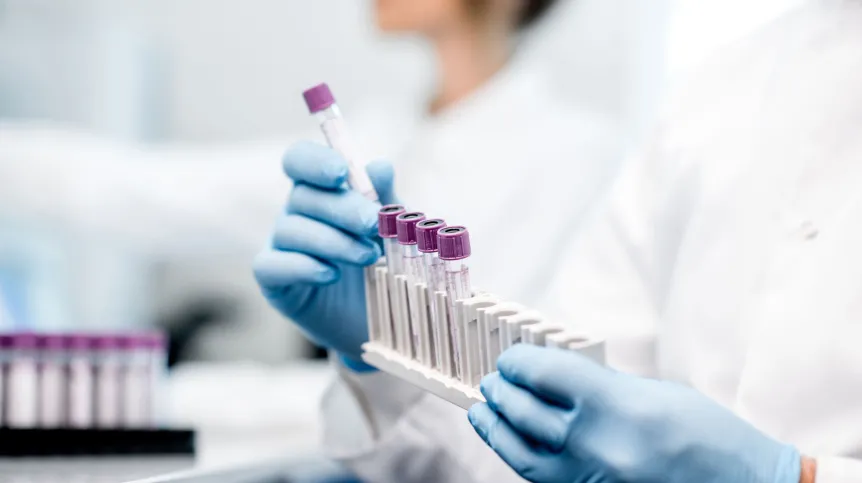
Researchers from the Faculty of Biology of the Jagiellonian University have found a method that allows scientists to quickly obtain bone tissue cells ready for transplants or other uses in bone regeneration therapies.
According to the university, the new method involves collecting mesenchymal stem cells (MSCs) from adipose tissue and stimulating them to differentiate towards bone tissue. The authors of the invention claim that the use of adipose tissue cells and the new method of guiding them to differentiate into bone tissue cells is more effective, faster and easier compared to other currently used methods in bone tissue regeneration therapies using bone marrow or adipose tissue MSCs.
'MSCs are cells that are ready for instructions. As soon as they receive them, they can transform into tissues with specific functionalities. For medicine, MSCs are very useful and desirable because access to them - along with the ability to differentiate them in a controlled manner - gives us the opportunity regeneration of diseased and damaged tissues. Properly differentiated cells can be used for regenerative therapies, including transplantationm’ says Anna Maria Osyczka, a professor at the Institute of Zoology and Biomedical Research of the Jagiellonian University.
She adds that the researchers have developed a method that allows them to very quickly 'instruct' previously isolated adipose tissue MSCs to become bone tissue cells. 'The idea is that cells prepared in this way in laboratory conditions can be safely administered to patients. The method of their use and administration is an open issue, depending on the individually designed cell therapy,’ she says.
Researchers from the Jagiellonian University combined several cell stimulation methods to achieve the intended effect, i.e. quickly cause adipose tissue cells to differentiate into bone cells. 'For this purpose, they developed a special cocktail of chemical agents administered to the cells, as well as a simple method of mechanical stimulation of the cells (proper mixing of the medium administered to the cells). The third important element of the invention was the use of so-called bioactive, composite growth media for cell culture,’ the university reports.
'MSCs from adipose tissue in a culture are not able to initiate the bone tissue formation process on their own. However, the composition of the medium administered to the cells, as well as appropriate mixing of the medium, very quickly leads adipose tissue MSCs to differentiate into bone tissue cells. This process is supported by the use of specific cell growth media developed at AGH UST,’ says Karolina Truchan, co-author of the invention and a doctoral candidate at the Jagiellonian University.
The composite substrates used in the invention contain bioactive glass component, modified in terms of the content of certain oxides. 'We have so far demonstrated that such substrates exhibit a number of desirable biological properties and can independently guide bone marrow MSCs to differentiate into bone cells,’ says Dr. Osyczka.
The new method is the result of many years of research work by Dr. Osyczka and Karolina Truchan, as well as the collaborating researchers: Dr. Katarzyna Cholewa-Kowalska, a professor at AGH University of Science and Technology, and doctoral candidate Barbara Zagrajczuk.
The scientists add that the new method makes it possible to effectively program adipose tissue MSCs so that the cultured cells become bone cells in a few days. The culture prepared in this way can potentially be used for various cell therapies involving autografts.
The developed intellectual property is co-owned by the AGH University of Science and Technology, which participated in the development of the composition of bioactive growth media for MSC cultures. All inventions of the Jagiellonian University team are covered by patent protection. Some of the research that resulted in the above technologies was carried out as part of the Diamond Grant financed by the Ministry of Education and Science, awarded to Karolina Truchan. (PAP)
PAP - Science in Poland, Julia Kalęba
juka/ zan/ kap/
tr. RL













